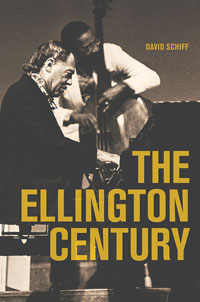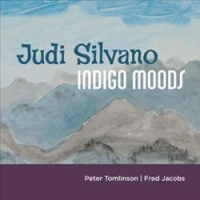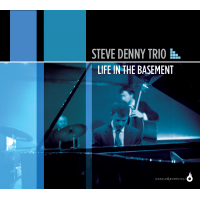Home » Jazz Articles » Book Review » David Schiff: The Ellington Century
David Schiff: The Ellington Century
 The Ellington Century
The Ellington CenturyDavid Schiff
Hardcover; 336 pages
ISBN: 978-0-520-24587-7
University of California Press
2012
In the pantheon of jazz giants, bandleader and pianist Duke Ellington holds an undisputed top spot, but, David Schiff believes, Ellington has never been given the recognition he also deserves as a composer. Schiff redresses the slight in this groundbreaking, if sometimes too dense, study.
"European music, torn loose from its older harmonic moorings, needed to acquire something of the rhythmic backbone of jazz," Schiff writes. "African American music, evolving from an array of regional folk styles toward a sophisticated form of artistic expression, at times looked to European modernism for inspiration."
Schiff positions Ellington as a visionary musical fusionist, distilling jazz with the dynamics of orchestral music. Indeed, if George Gershwin is considered primarily a classical composer, how is it possible that Ellington would be excluded? The scope of Ellington's influence in a broader, more academic context including classical music, needs to be acknowledged.
Ellington's most famous compositions—from "Take the A-Train" to "Diminuendo and Crescendo in Blue"—is such an incomplete representation of his repertoire. Equal attention should be paid to Ellington's symphonic suites, piano studies and ethno-sacred music; these areas produced some of his most innovative work.
Ellington was unique even among the exploitative industry kingpins of his era. Irving Mills, for instance, instructed his publishing agents not to "treat Duke Ellington as just another jazz bandleader." And Ellington recorded for for RCA Victor, and was not segregated to "race" labels. Even so, he was victim to industry racism, which played a hand in his strategies and output.
The backdrop to any African American artist in the 20th century are the racist realities of the time. Ellington may have been viewed as the goodtime, elegant Cotton Club bandleader, but, in fact, he heeded the call of Harlem artists and black leaders to artistically address racial injustice. Premiering "Black, Brown and Beige" in 1943, Ellington commented that, once again, "Black, brown and beige would be fighting for the red, white and blue."
His first major opus, "Black, Brown and Beige" encompasses a musical narrative of African American history. It was meant as a statement against racial injustice, at a time when African American men were being sent off to fight for freedoms they didn't enjoy in their own country. Schiff notes that even Ellington biographer Lincoln Collier ignores such historic performances and, just as odd, the import of his sacred music, chamber works and symphonic suites.
Ellington's contemporaries in the US were always in his direct musical orbit. His recordings with stars such as trumpeter Louis Armstrong and singer Ella Fitzgerald, as well as his connection to such post- WWII masters as tenor saxophonist Coleman Hawkins, pianist Thelonious Monk, drummer Max Roach, bassist Charles Mingus, trumpeter Dizzy Gillespie and others shows, proves how relevant his career remained. Schiff gives Ellington's lesser known catalogue with some of these players its due as well.
There are many compelling aspects to the scholarship in The Ellington Century, yet Schiff should, perhaps, have structured the book differently. The purely musicological content would have been better separated in end notes or appendixes. Positioned with the main narrative makes tough going for people who don't play an instrument or read music. But, past that, this book will be a must read for Ellingtonians and any musician interested in jazz-classical theory.
Schiff is a composer, music journalist and author of George Gershwin: Rhapsody In Blue (Cambridge University Press, 1997) and The Music of Elliot Carter (Cornell University Press, 1998).
Tags
Book Reviews
Lewis J Whittington
United States
duke ellington
George Gershwin
Louis Armstrong
Ella Fitzgerald
Coleman Hawkins
Thelonious Monk
Max Roach
Charles Mingus
Dizzy Gillespie
PREVIOUS / NEXT
Support All About Jazz
 All About Jazz has been a pillar of jazz since 1995, championing it as an art form and, more importantly, supporting the musicians who make it. Our enduring commitment has made "AAJ" one of the most culturally important websites of its kind, read by hundreds of thousands of fans, musicians and industry figures every month.
All About Jazz has been a pillar of jazz since 1995, championing it as an art form and, more importantly, supporting the musicians who make it. Our enduring commitment has made "AAJ" one of the most culturally important websites of its kind, read by hundreds of thousands of fans, musicians and industry figures every month.




















